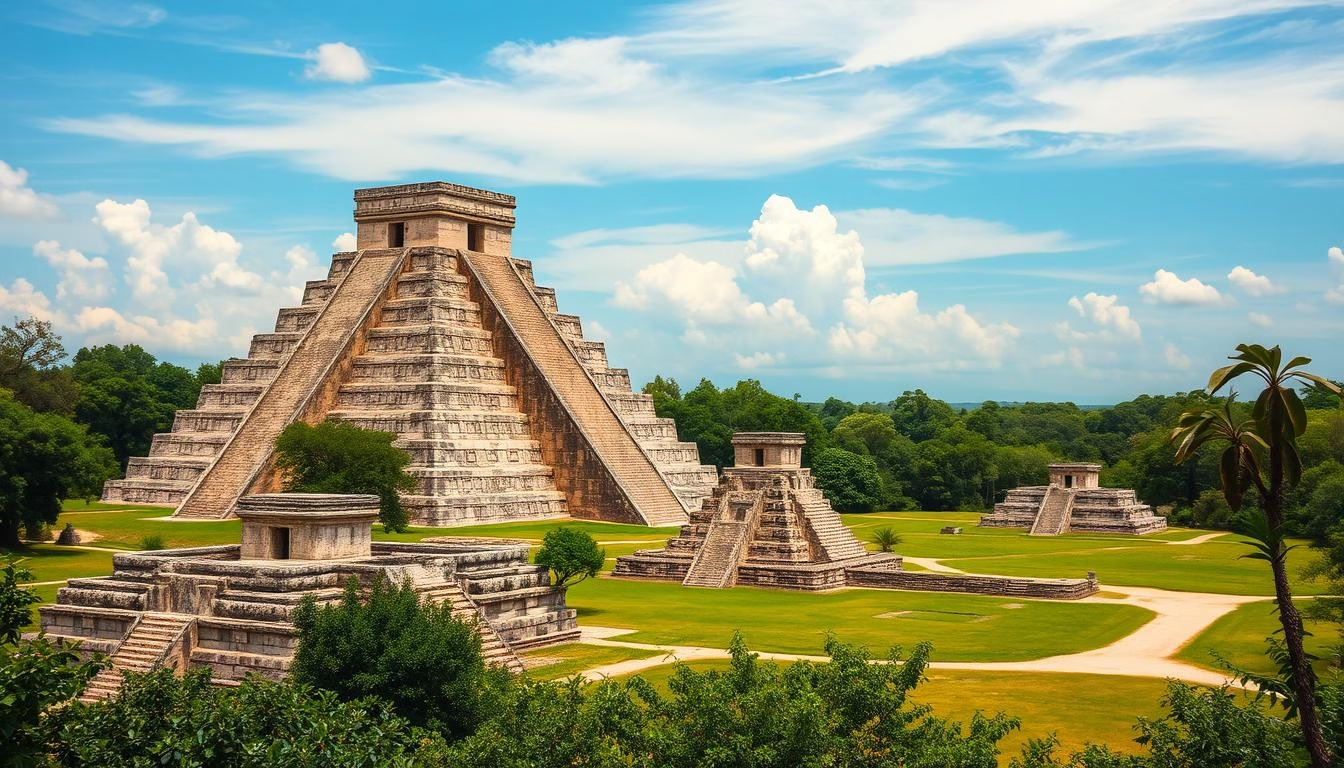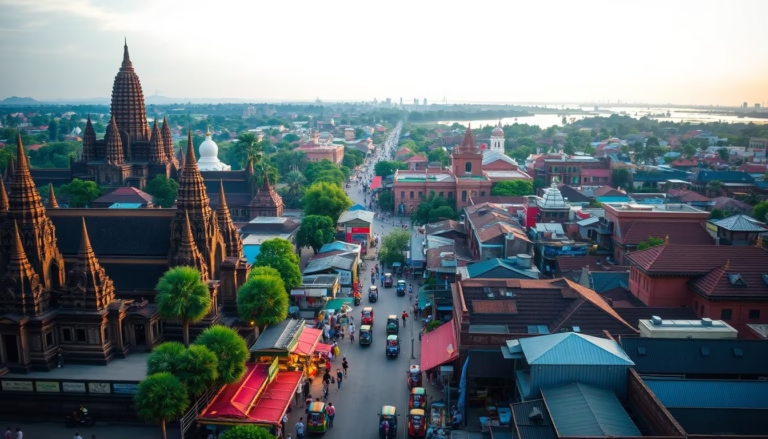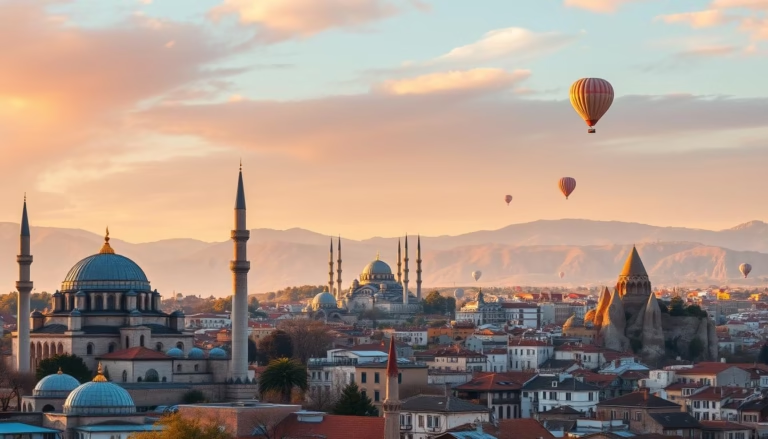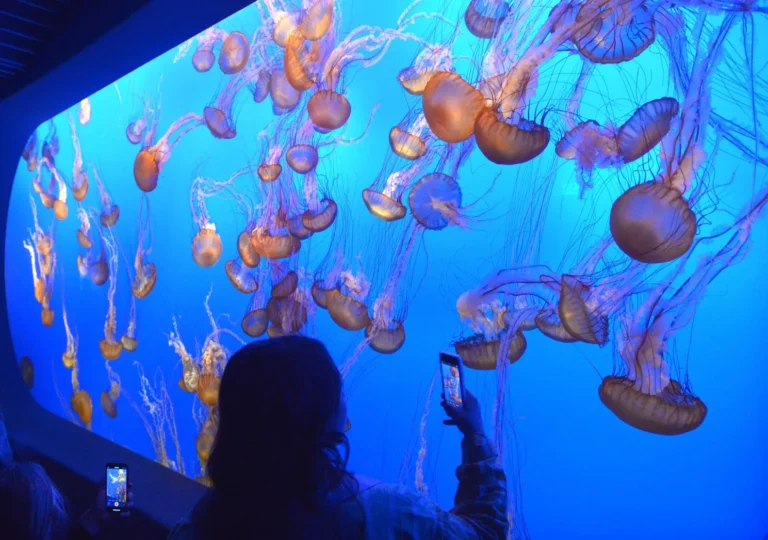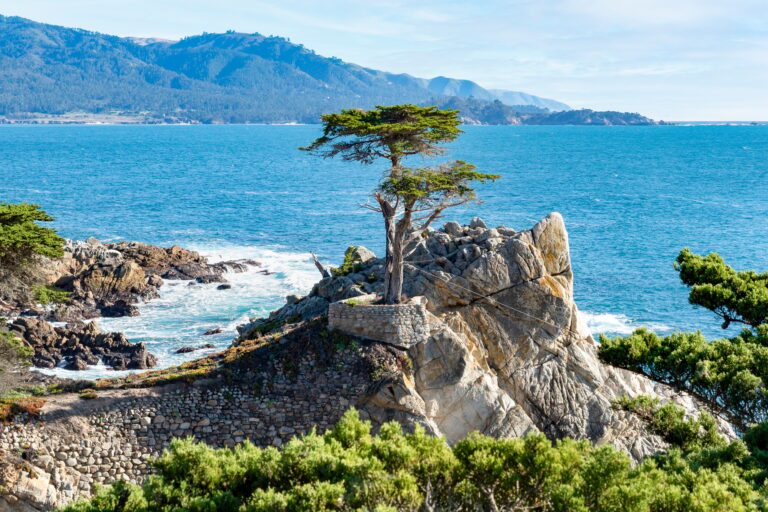Chichen Itza: A Guide to the Top Sights and Attractions
Step into a world where ancient stone pyramids pierce the sky and whispers of Mayan civilization echo through sunlit plazas. This UNESCO World Heritage Site, recognized as one of the New Seven Wonders of the World, offers more than just ruins—it’s a gateway to understanding a sophisticated culture that thrived over 1,200 years ago.
Spread across 740 acres in Mexico’s Yucatan Peninsula, the archaeological site reveals a metropolis that once bustled with traders, astronomers, and warriors. Structures like El Castillo pyramid showcase precise astronomical alignments, while the Great Ball Court hints at sacred rituals. By the 10th century, this city had become a crossroads connecting distant regions through commerce and ideas.
This guide unlocks both iconic landmarks and lesser-known treasures. You’ll learn how to navigate the sprawling grounds efficiently and discover hidden details most visitors miss. From practical advice to cultural insights, we’ll help you experience this timeless destination like a seasoned explorer.
Key Takeaways
- Recognized as both a UNESCO World Heritage Site and a New Seven Wonder
- Covers 740 acres with structures dating back to 800 AD
- Features advanced astronomical designs in its architecture
- Served as a major hub for trade and cultural exchange
- Offers hidden areas beyond the famous main pyramid
- Requires strategic planning to fully appreciate its scale
Introduction to Chichen Itza
Centuries ago, a thriving metropolis stood as the heart of Mayan culture, drawing pilgrims from distant lands. Recognized as a UNESCO World Heritage Site, this ancient marvel in Mexico’s Yucatan Peninsula reveals stories of innovation and spiritual devotion etched into every structure.
Overview and Significance
By the 10th century, the city had become a bustling hub where astronomy met artistry. Its sacred cenotes and pyramid temples attracted travelers from across Mesoamerica. Advanced stonework aligned with seasonal changes, proving the Maya’s deep connection to nature’s rhythms.
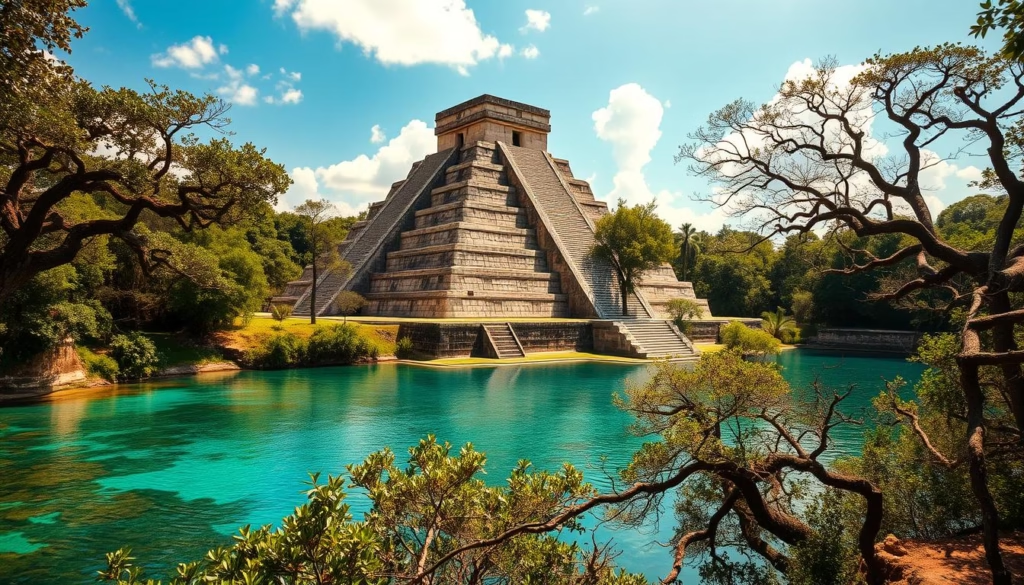
Why This Site Captivates Travelers
The magic lies in unanswered questions. How did builders create whispering galleries that carry voices 150 feet? Why did residents abandon their homes abruptly in the 12th century? These mysteries make visitors feel like detectives piecing together clues.
| Feature | Innovation | Modern Impact |
|---|---|---|
| El Castillo | 365-step solar calendar | Equinox shadow serpent |
| Sacred Cenote | Ritual offerings site | Archaeological treasure trove |
| Great Ball Court | Echo-enhanced gameplay | Acoustic engineering marvel |
Today, the site bridges past and present. Visitors trace paths once walked by astronomers and traders, sensing the same awe that gripped ancient people. This living classroom turns every stone into a history lesson.
Planning Your Trip to Chichen Itza
Ready to explore one of Mexico’s most iconic destinations? Smart planning transforms a good visit into an unforgettable journey. Timing and logistics determine whether you’ll battle crowds or enjoy quiet moments with ancient wonders.
Best Time to Visit and Weather Insights
November through April offers ideal conditions—mild temperatures and minimal rain. This peak season draws thousands daily, so arrive early to beat tour groups. Expect midday heat even in cooler months: sunscreen and hats are non-negotiable.
Travelers preferring solitude can plan trips between May and September. Afternoon showers cool the jungle air, but humidity stays high. You’ll trade blue skies for lush greenery and shorter lines at key landmarks.
| Season | Crowd Level | Weather Pattern | Pro Tip |
|---|---|---|---|
| Peak (Nov-Apr) | High | Dry, 75-85°F | Enter at 8 AM |
| Shoulder (May-Sep) | Moderate | Humid, brief storms | Pack quick-dry gear |
| Off-Peak (Oct) | Low | Transitional | Check hurricane alerts |
Travel Logistics and Itinerary Suggestions
Most visitors take day trips from Cancún (2.5-hour drive) or Mérida (1.5 hours). For deeper exploration, stay overnight in Pisté village. Hotels near the site let you experience the magical sound-and-light show after dark.
Allocate 4-6 hours to walk the entire complex comfortably. Combine your trip with nearby cenotes like Ik Kil for a refreshing post-tour swim. Guided tours simplify transportation but limit flexibility—rental cars offer freedom to explore at your own pace.
Understanding the Historical Background
Every carved pillar and weathered step at this archaeological wonder holds clues to a civilization’s dramatic journey. From humble beginnings to astonishing heights, the story behind these stones reshapes how we view ancient innovation.
Rise and Fall of the Mayan Civilization
Around 600 A.D., a settlement took root in the Yucatan Peninsula’s dense forests. Over four centuries, it grew into a cosmopolitan hub, connecting trade routes from Guatemala’s highlands to coastal Caribbean ports. Merchants traded jade, obsidian, and feathers while astronomers charted celestial patterns.
By 900 A.D., the city reached its zenith. Engineers designed structures aligning with solstices, and mathematicians developed a calendar more accurate than Europe’s. The Great Ball Court’s whispering walls still carry cheers from games that decided fates.
Conflict changed everything. Power struggles fractured leadership by 1200 A.D., leaving the site abandoned. When Spanish explorers arrived 300 years later, they found only vine-covered ruins—a jungle-hidden testament to vanished greatness.
Rediscovered in the 1800s, Chichen Itza now reveals how climate shifts and social tensions can topple empires. Walking its plazas, you’ll sense both the Maya’s brilliance and the fragility of human achievement.
things to see in chichen itza
While El Castillo dominates postcards, the site’s true magic lies in its diverse collection of monuments. Over 20 major structures reveal stories of power, science, and daily life in this ancient urban center.
Iconic Ruins and Landmarks
The Temple of Warriors impresses with its forest of 200 carved columns. Each stone soldier tells tales of military might and sacred ceremonies. Nearby, the Great Ball Court stretches 545 feet—the largest in Mesoamerica—where echoes still mimic the cheers of spectators.
Don’t miss El Caracol, a circular observatory. Its narrow windows align with Venus’ positions, proving the Maya’s celestial mastery. Guides often share how priests used these sightlines to predict planting seasons.
| Structure | Unique Feature | Cultural Purpose |
|---|---|---|
| Temple of Warriors | 200 narrative columns | Military tributes |
| El Caracol | Astronomical alignments | Calendar creation |
| Great Ball Court | Acoustic perfection | Ritual sport events |
Hidden Gems and Lesser-Known Structures
Venture northeast to find Akab Dzib. This “Dark Writing House” hides mysterious carvings that still puzzle archaeologists. Its quiet courtyards offer peaceful breaks from main-path crowds.
The Casa Colorada surprises with well-preserved red handprints—ancient graffiti left by builders. Nearby, El Mercado’s colonnades suggest bustling market activity. These spots let you imagine daily life beyond grand rituals.
| Site | Location Tip | Best For |
|---|---|---|
| Akab Dzib | Eastern complex | History buffs |
| Casa Colorada | South of main plaza | Photo opportunities |
| El Mercado | Near ball court | Cultural context |
Key Attractions at Chichen Itza
Three architectural marvels stand as testaments to Mayan ingenuity, each revealing unique aspects of this civilization’s spiritual and scientific prowess. These landmarks form the core experience for modern explorers.
El Castillo Pyramid and Its Mystique
The iconic 30-meter structure dominates the landscape with mathematical perfection. Its 365 steps mirror Earth’s annual journey around the sun. During equinoxes, shadows create an illusion of Kukulkan, the feathered serpent, slithering down the northern staircase.
Temple of the Warriors and Intricate Carvings
This complex features 200 columns etched with battle scenes and ceremonial rituals. Stone warriors stand guard near bowls once holding sacrificial offerings. The Temple Warriors carvings provide vivid snapshots of military and religious life.
| Structure | Feature | Purpose |
|---|---|---|
| El Castillo | Solar calendar steps | Astronomical ceremonies |
| Temple Warriors | Narrative columns | Military tributes |
| Sacred Cenote | 60m water basin | Rain god sacrifices |
Sacred Cenote and Its Ritual Significance
The massive sinkhole served as a portal to the underworld. Archaeologists discovered gold artifacts and human remains in its depths—evidence of sacrifices to Chaac, the rain god. Though its water appears tranquil today, this Chichen Itza day trip highlight once echoed with sacred chants.
Visitor Tips and Tricks
Exploring Chichen Itza becomes unforgettable with smart preparation. Follow these strategies to enjoy the ruins comfortably while avoiding common pitfalls.
How to Avoid Crowds and Long Lines
Beat the rush by arriving 15 minutes before the 8 AM opening. Early birds enjoy 90 crowd-free minutes to photograph El Castillo and the Great Ball Court. Tour buses typically arrive after 10 AM.
Book skip-the-line tickets online to bypass entrance queues. Peak season lines can exceed 60 minutes—advanced tickets save time and energy. Consider visiting around 3 PM when crowds thin dramatically.
| Time Slot | Crowd Level | Advantage |
|---|---|---|
| 8-9:30 AM | Low | Golden hour photos |
| 10 AM-2 PM | Extreme | Avoid if possible |
| 3-5 PM | Moderate | Quiet exploration |
Sun Protection and Staying Hydrated
The Yucatan sun transforms stone pathways into griddles. Wear lightweight, breathable clothing and reapply SPF 50+ sunscreen every two hours. Wide-brimmed hats and UV-blocking umbrellas create portable shade zones.
Carry at least 1 liter of water per person. Hydration stations are scarce, and dehydration sneaks up quickly. Take breaks under rare shaded areas near the Temple of Warriors or Casa Colorada.
| Essential Item | Purpose | Pro Tip |
|---|---|---|
| Collapsible Umbrella | Instant shade | Choose silver-coated for heat reflection |
| Electrolyte Tablets | Hydration boost | Add to water bottles |
| Moisture-Wicking Bandana | Neck protection | Soak in cool water |
Tour Options: Guided vs. Self-Exploration
Choosing how to experience Chichen Itza shapes your adventure. Visitors face a key decision: join a structured group or wander freely. Both approaches offer distinct ways to connect with this ancient wonder.
Benefits of a Guided Tour
Guided tours unlock layers of history invisible to casual observers. Knowledgeable experts explain celestial alignments at El Castillo and reveal carvings’ symbolic meanings. This option transforms stone structures into vivid chapters of Mayan life.
Exploring Independently: Pros and Cons
Self-guided tours let you linger at personal highlights. You control the pace, spending extra time photographing the Great Ball Court or relaxing in shaded areas. However, without context, architectural marvels may lose their narrative impact.
Many travelers find a balanced way works best—joining a morning tour for insights, then revisiting favorite spots solo. Whether you visit with a guide or map your own path, preparation ensures every moment counts.
